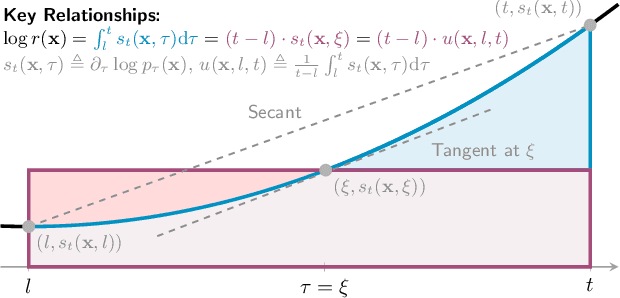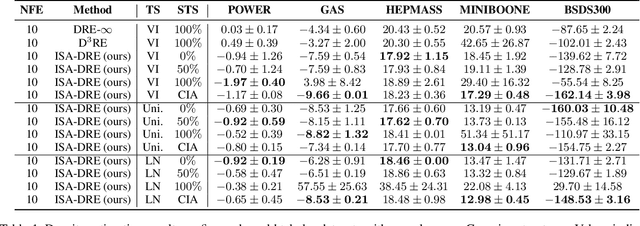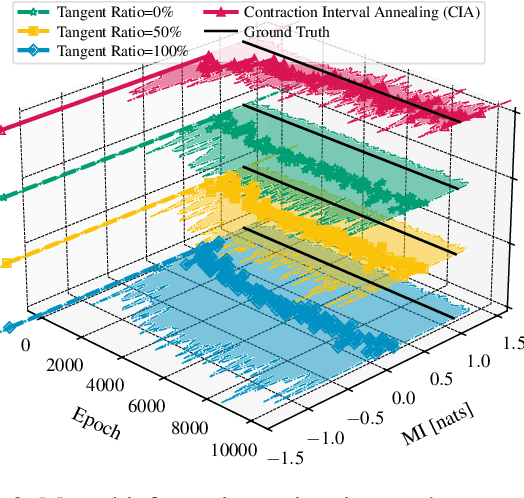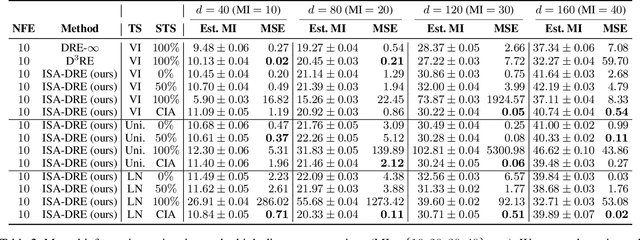Qibin Zhao
Calibrating Uncertainty for Zero-Shot Adversarial CLIP
Dec 15, 2025Abstract:CLIP delivers strong zero-shot classification but remains highly vulnerable to adversarial attacks. Previous work of adversarial fine-tuning largely focuses on matching the predicted logits between clean and adversarial examples, which overlooks uncertainty calibration and may degrade the zero-shot generalization. A common expectation in reliable uncertainty estimation is that predictive uncertainty should increase as inputs become more difficult or shift away from the training distribution. However, we frequently observe the opposite in the adversarial setting: perturbations not only degrade accuracy but also suppress uncertainty, leading to severe miscalibration and unreliable over-confidence. This overlooked phenomenon highlights a critical reliability gap beyond robustness. To bridge this gap, we propose a novel adversarial fine-tuning objective for CLIP considering both prediction accuracy and uncertainty alignments. By reparameterizing the output of CLIP as the concentration parameter of a Dirichlet distribution, we propose a unified representation that captures relative semantic structure and the magnitude of predictive confidence. Our objective aligns these distributions holistically under perturbations, moving beyond single-logit anchoring and restoring calibrated uncertainty. Experiments on multiple zero-shot classification benchmarks demonstrate that our approach effectively restores calibrated uncertainty and achieves competitive adversarial robustness while maintaining clean accuracy.
Any-Step Density Ratio Estimation via Interval-Annealed Secant Alignment
Sep 05, 2025



Abstract:Estimating density ratios is a fundamental problem in machine learning, but existing methods often trade off accuracy for efficiency. We propose \textit{Interval-annealed Secant Alignment Density Ratio Estimation (ISA-DRE)}, a framework that enables accurate, any-step estimation without numerical integration. Instead of modeling infinitesimal tangents as in prior methods, ISA-DRE learns a global secant function, defined as the expectation of all tangents over an interval, with provably lower variance, making it more suitable for neural approximation. This is made possible by the \emph{Secant Alignment Identity}, a self-consistency condition that formally connects the secant with its underlying tangent representations. To mitigate instability during early training, we introduce \emph{Contraction Interval Annealing}, a curriculum strategy that gradually expands the alignment interval during training. This process induces a contraction mapping, which improves convergence and training stability. Empirically, ISA-DRE achieves competitive accuracy with significantly fewer function evaluations compared to prior methods, resulting in much faster inference and making it well suited for real-time and interactive applications.
Neural Bridge Processes
Aug 10, 2025Abstract:Learning stochastic functions from partially observed context-target pairs is a fundamental problem in probabilistic modeling. Traditional models like Gaussian Processes (GPs) face scalability issues with large datasets and assume Gaussianity, limiting their applicability. While Neural Processes (NPs) offer more flexibility, they struggle with capturing complex, multi-modal target distributions. Neural Diffusion Processes (NDPs) enhance expressivity through a learned diffusion process but rely solely on conditional signals in the denoising network, resulting in weak input coupling from an unconditional forward process and semantic mismatch at the diffusion endpoint. In this work, we propose Neural Bridge Processes (NBPs), a novel method for modeling stochastic functions where inputs x act as dynamic anchors for the entire diffusion trajectory. By reformulating the forward kernel to explicitly depend on x, NBP enforces a constrained path that strictly terminates at the supervised target. This approach not only provides stronger gradient signals but also guarantees endpoint coherence. We validate NBPs on synthetic data, EEG signal regression and image regression tasks, achieving substantial improvements over baselines. These results underscore the effectiveness of DDPM-style bridge sampling in enhancing both performance and theoretical consistency for structured prediction tasks.
QuProFS: An Evolutionary Training-free Approach to Efficient Quantum Feature Map Search
Aug 09, 2025Abstract:The quest for effective quantum feature maps for data encoding presents significant challenges, particularly due to the flat training landscapes and lengthy training processes associated with parameterised quantum circuits. To address these issues, we propose an evolutionary training-free quantum architecture search (QAS) framework that employs circuit-based heuristics focused on trainability, hardware robustness, generalisation ability, expressivity, complexity, and kernel-target alignment. By ranking circuit architectures with various proxies, we reduce evaluation costs and incorporate hardware-aware circuits to enhance robustness against noise. We evaluate our approach on classification tasks (using quantum support vector machine) across diverse datasets using both artificial and quantum-generated datasets. Our approach demonstrates competitive accuracy on both simulators and real quantum hardware, surpassing state-of-the-art QAS methods in terms of sampling efficiency and achieving up to a 2x speedup in architecture search runtime.
Parameter-Efficient Fine-Tuning of 3D DDPM for MRI Image Generation Using Tensor Networks
Jul 24, 2025



Abstract:We address the challenge of parameter-efficient fine-tuning (PEFT) for three-dimensional (3D) U-Net-based denoising diffusion probabilistic models (DDPMs) in magnetic resonance imaging (MRI) image generation. Despite its practical significance, research on parameter-efficient representations of 3D convolution operations remains limited. To bridge this gap, we propose Tensor Volumetric Operator (TenVOO), a novel PEFT method specifically designed for fine-tuning DDPMs with 3D convolutional backbones. Leveraging tensor network modeling, TenVOO represents 3D convolution kernels with lower-dimensional tensors, effectively capturing complex spatial dependencies during fine-tuning with few parameters. We evaluate TenVOO on three downstream brain MRI datasets-ADNI, PPMI, and BraTS2021-by fine-tuning a DDPM pretrained on 59,830 T1-weighted brain MRI scans from the UK Biobank. Our results demonstrate that TenVOO achieves state-of-the-art performance in multi-scale structural similarity index measure (MS-SSIM), outperforming existing approaches in capturing spatial dependencies while requiring only 0.3% of the trainable parameters of the original model. Our code is available at: https://github.com/xiaovhua/tenvoo
Spontaneous Spatial Cognition Emerges during Egocentric Video Viewing through Non-invasive BCI
Jul 16, 2025



Abstract:Humans possess a remarkable capacity for spatial cognition, allowing for self-localization even in novel or unfamiliar environments. While hippocampal neurons encoding position and orientation are well documented, the large-scale neural dynamics supporting spatial representation, particularly during naturalistic, passive experience, remain poorly understood. Here, we demonstrate for the first time that non-invasive brain-computer interfaces (BCIs) based on electroencephalography (EEG) can decode spontaneous, fine-grained egocentric 6D pose, comprising three-dimensional position and orientation, during passive viewing of egocentric video. Despite EEG's limited spatial resolution and high signal noise, we find that spatially coherent visual input (i.e., continuous and structured motion) reliably evokes decodable spatial representations, aligning with participants' subjective sense of spatial engagement. Decoding performance further improves when visual input is presented at a frame rate of 100 ms per image, suggesting alignment with intrinsic neural temporal dynamics. Using gradient-based backpropagation through a neural decoding model, we identify distinct EEG channels contributing to position -- and orientation specific -- components, revealing a distributed yet complementary neural encoding scheme. These findings indicate that the brain's spatial systems operate spontaneously and continuously, even under passive conditions, challenging traditional distinctions between active and passive spatial cognition. Our results offer a non-invasive window into the automatic construction of egocentric spatial maps and advance our understanding of how the human mind transforms everyday sensory experience into structured internal representations.
Domain-Aware Tensor Network Structure Search
May 29, 2025Abstract:Tensor networks (TNs) provide efficient representations of high-dimensional data, yet identification of the optimal TN structures, the so called tensor network structure search (TN-SS) problem, remains a challenge. Current state-of-the-art (SOTA) algorithms are computationally expensive as they require extensive function evaluations, which is prohibitive for real-world applications. In addition, existing methods ignore valuable domain information inherent in real-world tensor data and lack transparency in their identified TN structures. To this end, we propose a novel TN-SS framework, termed the tnLLM, which incorporates domain information about the data and harnesses the reasoning capabilities of large language models (LLMs) to directly predict suitable TN structures. The proposed framework involves a domain-aware prompting pipeline which instructs the LLM to infer suitable TN structures based on the real-world relationships between tensor modes. In this way, our approach is capable of not only iteratively optimizing the objective function, but also generating domain-aware explanations for the identified structures. Experimental results demonstrate that tnLLM achieves comparable TN-SS objective function values with much fewer function evaluations compared to SOTA algorithms. Furthermore, we demonstrate that the LLM-enabled domain information can be used to find good initializations in the search space for sampling-based SOTA methods to accelerate their convergence while preserving theoretical performance guarantees.
Model-Free Adversarial Purification via Coarse-To-Fine Tensor Network Representation
Feb 25, 2025Abstract:Deep neural networks are known to be vulnerable to well-designed adversarial attacks. Although numerous defense strategies have been proposed, many are tailored to the specific attacks or tasks and often fail to generalize across diverse scenarios. In this paper, we propose Tensor Network Purification (TNP), a novel model-free adversarial purification method by a specially designed tensor network decomposition algorithm. TNP depends neither on the pre-trained generative model nor the specific dataset, resulting in strong robustness across diverse adversarial scenarios. To this end, the key challenge lies in relaxing Gaussian-noise assumptions of classical decompositions and accommodating the unknown distribution of adversarial perturbations. Unlike the low-rank representation of classical decompositions, TNP aims to reconstruct the unobserved clean examples from an adversarial example. Specifically, TNP leverages progressive downsampling and introduces a novel adversarial optimization objective to address the challenge of minimizing reconstruction error but without inadvertently restoring adversarial perturbations. Extensive experiments conducted on CIFAR-10, CIFAR-100, and ImageNet demonstrate that our method generalizes effectively across various norm threats, attack types, and tasks, providing a versatile and promising adversarial purification technique.
Transformed Low-rank Adaptation via Tensor Decomposition and Its Applications to Text-to-image Models
Jan 15, 2025



Abstract:Parameter-Efficient Fine-Tuning (PEFT) of text-to-image models has become an increasingly popular technique with many applications. Among the various PEFT methods, Low-Rank Adaptation (LoRA) and its variants have gained significant attention due to their effectiveness, enabling users to fine-tune models with limited computational resources. However, the approximation gap between the low-rank assumption and desired fine-tuning weights prevents the simultaneous acquisition of ultra-parameter-efficiency and better performance. To reduce this gap and further improve the power of LoRA, we propose a new PEFT method that combines two classes of adaptations, namely, transform and residual adaptations. In specific, we first apply a full-rank and dense transform to the pre-trained weight. This learnable transform is expected to align the pre-trained weight as closely as possible to the desired weight, thereby reducing the rank of the residual weight. Then, the residual part can be effectively approximated by more compact and parameter-efficient structures, with a smaller approximation error. To achieve ultra-parameter-efficiency in practice, we design highly flexible and effective tensor decompositions for both the transform and residual adaptations. Additionally, popular PEFT methods such as DoRA can be summarized under this transform plus residual adaptation scheme. Experiments are conducted on fine-tuning Stable Diffusion models in subject-driven and controllable generation. The results manifest that our method can achieve better performances and parameter efficiency compared to LoRA and several baselines.
Scaling Capability in Token Space: An Analysis of Large Vision Language Model
Dec 30, 2024



Abstract:The scaling capability has been widely validated in neural language models with respect to the number of parameters and the size of training data. One important question is that does the scaling capability also exists similarly with respect to the number of vision tokens in large vision language Model? This study fills the gap by investigating the relationship between the number of vision tokens and the performance on vision-language models. Our theoretical analysis and empirical evaluations demonstrate that the model exhibits scalable performance \(S(N_l)\) with respect to the number of vision tokens \(N_l\), characterized by the relationship \(S(N_l) \approx (c/N_l)^{\alpha}\). Furthermore, we also investigate the impact of a fusion mechanism that integrates the user's question with vision tokens. The results reveal two key findings. First, the scaling capability remains intact with the incorporation of the fusion mechanism. Second, the fusion mechanism enhances model performance, particularly when the user's question is task-specific and relevant. The analysis, conducted on fifteen diverse benchmarks spanning a broad range of tasks and domains, validates the effectiveness of the proposed approach.
 Add to Chrome
Add to Chrome Add to Firefox
Add to Firefox Add to Edge
Add to Edge